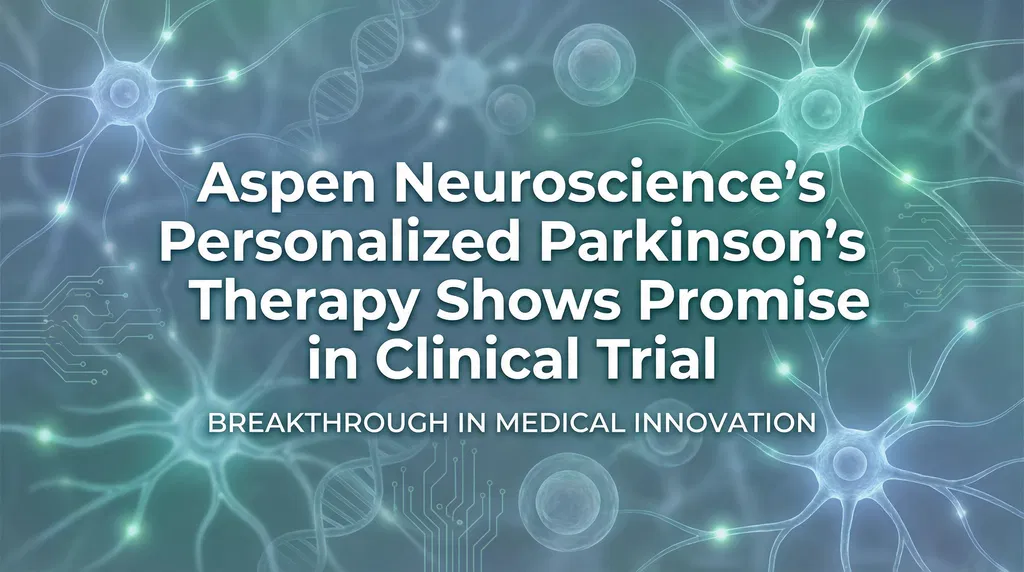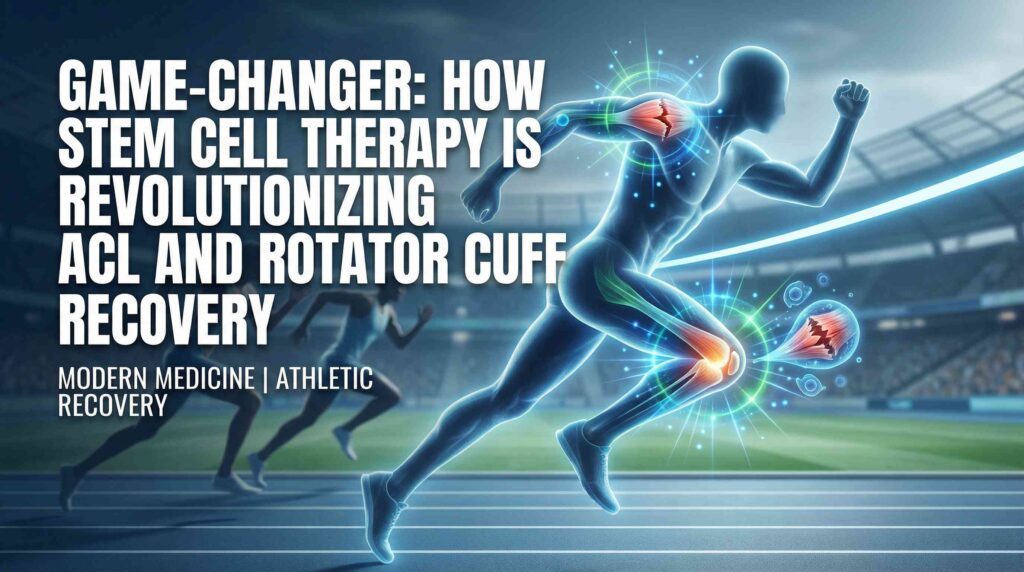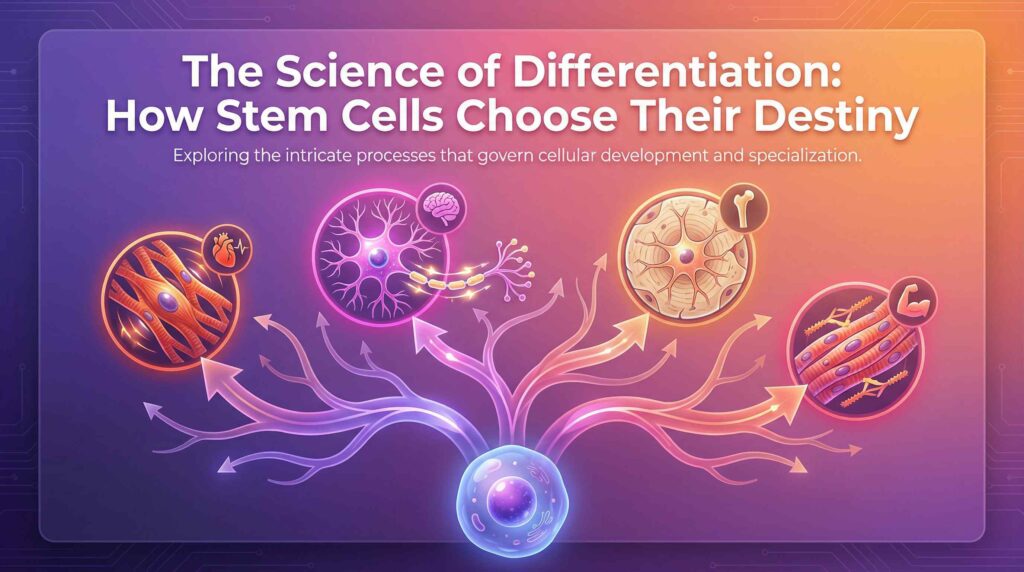The Role of Stem Cells in Regenerative Medicine
Regenerative medicine is like the superhero of modern healthcare, swooping in to repair and rejuvenate damaged tissues and organs. At the heart of this transformative field are stem cells, the versatile powerhouses capable of developing into various cell types. These cells are the unsung heroes, working tirelessly behind the scenes to restore function and heal injuries.
Stem cells are unique because they can divide and renew themselves over long periods, remain unspecialized, and differentiate into specialized cells. This makes them invaluable in regenerative medicine, where they can be used to replace damaged cells, promote tissue repair, and even grow new organs. Imagine a world where a damaged heart can be healed with new heart cells or a spinal cord injury can be repaired with new nerve cells. That’s the promise of stem cell therapy.
Understanding Different Types of Stem Cells
Stem cells come in various flavors, each with its own unique properties and potential applications, including those derived from adult stem cells. Let’s break down the different types of stem cells:
- Totipotent Stem Cells: These are the ultimate all-rounders, capable of developing into any cell type in the body, including placental cells. The zygote, a fertilized egg, is a prime example of a totipotent cell.
- Pluripotent Stem Cells: These cells can become any cell type except those required for fetal development. They include:
- Embryonic Stem Cells (ESCs): Derived from blastocysts, they can generate all body cell types, but adult stem cells may offer more practical applications.
- Induced Pluripotent Stem Cells (iPSCs): Genetically reprogrammed adult cells with similar capabilities to ESCs.
- Multipotent Stem Cells: Limited to developing into a certain range of cells, typically within a specific lineage. Examples include:
- Mesenchymal Stem Cells (MSCs): Found in bone marrow, fat tissue, and umbilical cord blood, they can differentiate into bone, cartilage, and fat cells.
- Hematopoietic Stem Cells (HSCs): Found in bone marrow, they give rise to all blood cell types.
- Unipotent Stem Cells: The most limited in differentiation potential, producing only one cell type. An example is muscle stem cells, which exclusively differentiate into muscle cells.
Applications of Stem Cell Therapy in Regenerative Medicine
Stem cell therapy is like a Swiss Army knife for regenerative medicine, offering a multitude of applications. Here are some of the most promising uses:
- Cardiovascular Diseases: Stem cells can be used to repair damaged heart tissue, potentially reducing the need for heart transplants.
- Neurological Disorders: Stem cells offer hope for conditions like Parkinson’s disease, Alzheimer’s disease, and spinal cord injuries by replacing damaged neurons.
- Diabetes: Stem cells can be used to generate insulin-producing cells, offering a potential cure for type 1 diabetes.
- Orthopedic Conditions: Stem cells can promote the repair of bone and cartilage, offering new treatments for conditions like osteoarthritis and fractures.
- Wound Healing: Stem cells can accelerate the healing of chronic wounds and burns by promoting tissue regeneration.
Exploring Mesenchymal Stem Cells for Regenerative Purposes
Mesenchymal Stem Cells (MSCs) are the workhorses of regenerative medicine. These multipotent cells can differentiate into a variety of cell types, including bone, cartilage, and fat cells. MSCs are found in several tissues, including bone marrow, adipose tissue, and umbilical cord blood.
MSCs have several therapeutic properties that make them ideal for regenerative medicine:
- Immunomodulatory Effects of Adult Stem Cells: MSCs can modulate the immune response, reducing inflammation and promoting healing.
- Paracrine Signaling: MSCs secrete bioactive molecules that promote tissue repair and regeneration.
- Homing Ability: MSCs can migrate to sites of injury, where they exert their therapeutic effects.
Advancements in Stem Cell-Based Therapies
The field of stem cell-based therapies is advancing at a rapid pace, with new breakthroughs and innovations emerging regularly. Here are some of the most exciting developments:
- Organoids: Miniature, simplified versions of organs grown from stem cells, which can be used for disease modeling and drug testing.
- 3D Bioprinting: Using stem cells to print tissues and organs layer by layer, offering the potential to create custom-made organs for transplantation.
- Gene Editing: Techniques like CRISPR-Cas9 allow for precise editing of stem cell genomes, potentially correcting genetic defects before transplantation.
- Exosome Therapy Derived from Adult Stem Cells: Using exosomes, small vesicles secreted by stem cells, to deliver therapeutic molecules to target tissues derived from mesenchymal stromal cells.
Gene Therapy in Conjunction with Stem Cells
Combining gene therapy with stem cell therapy is like adding a turbocharger to an already powerful engine. Gene therapy involves modifying the genetic material of cells to treat or prevent disease. When applied to stem cells, it can enhance their therapeutic potential in several ways:
- Correcting Genetic Defects: Gene therapy can be used to correct genetic mutations in stem cells before they are transplanted, ensuring that the new cells are healthy and functional.
- Enhancing Stem Cell Function: Genes that promote cell survival, proliferation, and differentiation can be introduced into stem cells, boosting their regenerative capabilities.
- Targeted Therapies: Gene therapy can be used to engineer stem cells to produce therapeutic proteins or to target specific disease pathways.
Utilizing Pluripotent Stem Cells for Targeted Treatments
Pluripotent stem cells and mesenchymal stromal cells are like the Swiss Army knives of the cell world, capable of becoming almost any cell type in the body. This makes them incredibly valuable for targeted treatments in regenerative medicine. Here are some ways pluripotent stem cells are being used:
- Cardiac Repair: Pluripotent stem cells can be differentiated into cardiomyocytes (heart muscle cells) and used to repair damaged heart tissue.
- Neural Regeneration: These cells can be turned into neurons and glial cells, offering potential treatments for neurodegenerative diseases and spinal cord injuries.
- Liver Regeneration: Pluripotent stem cells can be used to generate hepatocytes (liver cells), providing new options for treating liver diseases.
Potential of Induced Pluripotent Stem Cells in Regenerative Medicine
Induced pluripotent stem cells (iPSCs) are a game-changer in regenerative medicine. These cells are created by reprogramming adult cells to revert to a pluripotent state, giving them the ability to become any cell type. The potential of iPSCs is vast:
- Personalized Medicine: iPSCs can be generated from a patient’s own cells, reducing the risk of immune rejection and allowing for personalized treatments.
- Disease Modeling: iPSCs can be used to create models of diseases in the lab, providing valuable insights into disease mechanisms and potential treatments.
- Drug Testing: iPSCs can be used to generate cells and tissues for drug testing, reducing the need for animal models and improving the accuracy of preclinical studies.
Current Research and Clinical Trials in Regenerative Medicine
The field of regenerative medicine is buzzing with research and clinical trials, each one a step closer to new treatments and cures. Here are some highlights:
- Cardiovascular Trials: Clinical trials are underway to test the use of stem cells for repairing heart tissue after a heart attack.
- Neurological Trials Using Stem Cell Treatment: Researchers are exploring the use of stem cells to treat conditions like Parkinson’s disease, Alzheimer’s disease, and spinal cord injuries.
- Diabetes Trials: Trials are testing the use of stem cells to generate insulin-producing cells for the treatment of type 1 diabetes.
- Orthopedic Trials: Stem cells are being tested for their ability to repair bone and cartilage in conditions like osteoarthritis and fractures.
Application of Stem Cell-Derived Therapies in Musculoskeletal Disorders
Musculoskeletal disorders, such as osteoarthritis, fractures, and muscle injuries, can significantly impact quality of life, but stem cell treatment offers promising solutions. Stem cell-derived therapies offer new hope for these conditions:
- Bone Repair: Stem cells can be used to promote the healing of fractures and to treat conditions like osteoporosis.
- Cartilage Repair: Stem cells can generate new cartilage, offering potential treatments for osteoarthritis and other cartilage-related conditions.
- Muscle Regeneration: Stem cells can be used to repair damaged muscle tissue, providing new options for treating muscle injuries and degenerative muscle diseases.
Exploring the Use of Stem Cells in Tissue Engineering
Tissue engineering is like building with biological Legos, using stem cells and scaffolds to create new tissues and organs. Here are some ways stem cells are being used in tissue engineering:
- Scaffolds: Stem cells are seeded onto biodegradable scaffolds, which provide a structure for the cells to grow and form new tissue.
- Bioprinting: 3D bioprinting uses stem cells to print tissues and organs layer by layer, offering the potential to create custom-made organs for transplantation.
- Organoids: Miniature, simplified versions of organs grown from stem cells, which can be used for disease modeling and drug testing.
Challenges and Opportunities in Stem Cell Transplantation
Stem cell transplantation offers incredible potential, but it also comes with challenges. Here are some of the key issues and opportunities:
- Immune Rejection: Transplanted stem cells can be rejected by the recipient’s immune system. Using autologous stem cells (from the patient’s own body) can help mitigate this issue.
- Tumor Formation: There is a risk that transplanted stem cells could form tumors. Careful screening and monitoring of stem cells can help reduce this risk.
- Ethical Concerns: The use of embryonic stem cells raises ethical issues. Induced pluripotent stem cells (iPSCs) offer an alternative that avoids these concerns and can be generated from adult stem cells.
Innovative Approaches with Human Embryonic Stem Cells
Human embryonic stem cells (ESCs) are the gold standard in stem cell research due to their ability to differentiate into any cell type. Here are some innovative approaches using ESCs:
- Disease Modeling: ESCs can be used to create models of diseases in the lab, providing valuable insights into disease mechanisms and potential treatments.
- Drug Testing: ESCs can be used to generate cells and tissues for drug testing, reducing the need for animal models and improving the accuracy of preclinical studies.
- Regenerative Therapies: ESCs can be used to generate new tissues and organs for transplantation, offering potential treatments for a wide range of conditions.
Future Prospects and Ethical Considerations
The future of regenerative medicine is bright, but it also comes with ethical considerations. Here are some key points to consider:
- Potential Benefits: The potential benefits of stem cell therapies are immense, offering new treatments and cures for a wide range of conditions.
- Ethical Concerns: The use of embryonic stem cells raises ethical issues. Induced pluripotent stem cells (iPSCs) offer an alternative that avoids these concerns.
- Regulatory Frameworks: Clear regulatory frameworks are needed to ensure the safety and efficacy of stem cell therapies.
Regulatory Frameworks Surrounding Stem Cell Therapies
Regulatory frameworks are essential to ensure the safety and efficacy of stem cell therapies. Here are some key points:
- FDA Approval for Stem Cell Treatment: In the United States, the Food and Drug Administration (FDA) regulates stem cell therapies to ensure they are safe and effective.
- Clinical Trials: Rigorous clinical trials are needed to test the safety and efficacy of new stem cell therapies.
- Ethical Guidelines: Ethical guidelines are needed to address issues related to the use of embryonic stem cells and other ethical concerns.
Emerging Technologies in Stem Cell Differentiation
Emerging technologies are revolutionizing the field of stem cell differentiation. Here are some of the most exciting developments:
- CRISPR-Cas9: This gene-editing technology allows for precise editing of stem cell genomes, potentially correcting genetic defects before transplantation.
- Organoids: Miniature, simplified versions of organs grown from stem cells, which can be used for disease modeling and drug testing.
- 3D Bioprinting: Using stem cells to print tissues and organs layer by layer, offering the potential to create custom-made organs for transplantation.
Balancing Potential Benefits with Ethical Concerns in Regenerative Medicine
Balancing the potential benefits of regenerative medicine with ethical concerns is crucial. Here are some key points to consider:
- Potential Benefits: The potential benefits of stem cell therapies are immense, offering new treatments and cures for a wide range of conditions.
- Ethical Concerns: The use of embryonic stem cells raises ethical issues. Induced pluripotent stem cells (iPSCs) offer an alternative that avoids these concerns.
- Regulatory Frameworks: Clear regulatory frameworks are needed to ensure the safety and efficacy of stem cell therapies.
Conclusion
In conclusion, the potential of regenerative medicine using stem cells is vast and exciting. Stem cells also show great promise in various treatments. With continued research and innovation, we can unlock new treatments and cures for a wide range of conditions, improving the quality of life for countless individuals.
Citations: [1] https://frontiersin-healthcare-research.org/index.php/id/article/view/11 [2] https://www.ncbi.nlm.nih.gov/pmc/articles/PMC10816024/ [3] https://www.ncbi.nlm.nih.gov/pmc/articles/PMC10276889/ [4] https://www.dvcstem.com/post/different-types-of-stem-cells-and-their-functions [5] https://medlineplus.gov/stemcells.html [6] https://www.mdpi.com/1648-9144/59/8/1449 [7] https://karger.com/res/article/85/1/3/290661/Introduction-to-Stem-Cells-and-Regenerative [8] https://www.mdpi.com/2073-4409/10/1/54 [9] https://www.ncbi.nlm.nih.gov/pmc/articles/PMC4969512/ [10] https://www.mdpi.com/2306-5354/11/3/289 [11] https://onlinelibrary.wiley.com/doi/abs/10.1002/mco2.291 [12] https://www.cirm.ca.gov/patients/stem-cell-key-terms/ [13] https://www.stanfordchildrens.org/en/topic/default?id=what-are-stem-cells-160-38 [14] https://www.unmc.edu/regenerativemed/about/whatis/stemcells-regenerativemed.html [15] https://www.frontiersin.org/articles/10.3389/fcell.2021.661532/full [16] https://www.medicalnewstoday.com/articles/323343 [17] https://www.nature.com/articles/emm201394 [18] https://link.springer.com/article/10.1007/s12015-022-10369-1 [19] https://www.frontiersin.org/articles/10.3389/fbioe.2022.942750/full [20] https://www.technologynetworks.com/biopharma/articles/the-applications-of-cell-therapy-383051



